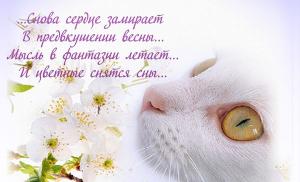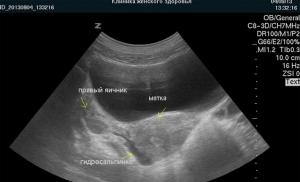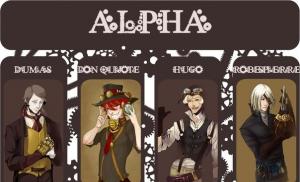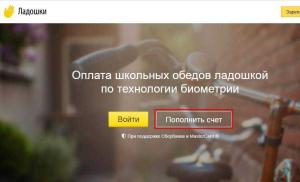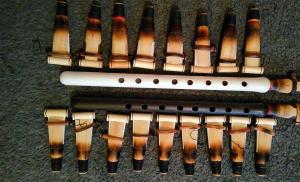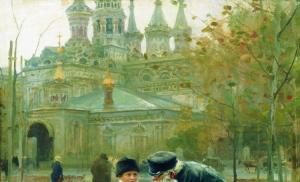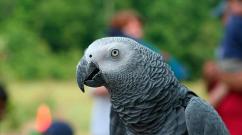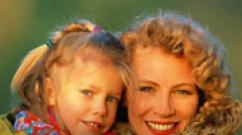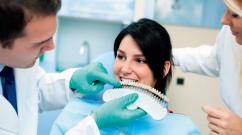Musculoskeletal system human skeleton presentation. Biology presentation "musculoskeletal system"



























Enable effects
1 of 28
Disable effects
See similar
Embed code
In contact with
Classmates
Telegram
Reviews
Add your review
Annotation to the presentation
This work is devoted to the human musculoskeletal system, its structure and functions. The paper examines in detail the bones and tissues of the musculoskeletal system, their structure and functions, and examines in detail the human musculoskeletal system.
- Structure and functions
- The structure of tissues and bones
- Bone chemicals
- Human musculoskeletal system
For the teacher to teach
Format
pptx (powerpoint)
Number of slides
Kassikhina Tatyana Alexandrovna
The audience
The words
Abstract
Present
purpose
slide 1
The presentation was prepared by Kassikhina Tatyana Alexandrovna, teacher of biology, chemistry, secondary school, village Gorodishe
slide 2
Structure and functions
- Skeleton
- muscles
- support
- Motor
- Protective
- hematopoietic
slide 3
The structure of tissues
A kind of connective;
A large amount of intercellular substance impregnated with mineral salts;
Cells are osteons, star-shaped.
Muscular:
Skeletal, long muscle fibers with many nuclei and the protein myosin, which can stretch and twist, giving a transverse striation to the fiber.
slide 4
The structure of the bones
slide 5
The structure of the long tubular bone
- bone heads
- Tubular part
- Periosteum
slide 6
Laboratory work
- Examine the cuts of the bones in the head and tubular part.
- Pay attention to what the heads of the tubular bone are filled with
- How are the bone plates located?
- Recall from your experience what the tubular part of the bone is filled with
- Make notes.
Slide 7
bone growth
- In length - due to cartilage
- In thickness - due to the periosteum
Slide 8
Bone chemicals
- organic
- Inorganic
Slide 9
Human skeleton
Slide 10
Departments of the skeleton
- Head skeleton - skull
- Trunk skeleton: spine, chest
- Free limb skeleton:
- upper: shoulder, forearm, hand;
- lower: thigh, lower leg, foot;
- Limb girdle skeleton:
- upper: scapula, collarbone;
- lower - pelvis.
slide 11
skull skeleton
- Cerebral
- Facial
slide 12
Torso skeleton
Rib cage:
1) sternum;
slide 13
Departments of the spine
- - cervical region
- - thoracic region
- - lumbar
- - sacral and coccygeal regions
Slide 14
Skeleton of the upper limb
- Upper limb belt
- Free upper limb
slide 15
Skeleton of the lower limb
- Lower limb belt
- Free lower limb
slide 16
Upper limb girdle skeleton
- Collarbone
- shoulder blade
Slide 17
Skeleton of the girdle of the lower limb
- The pelvis is three pairs of fused bones:
iliac,
Pubic,
Ischial
Slide 18
Types of bone connection
Slide 19
The structure of the joint
Task: Make a schematic drawing of the joint in a notebook and sign its parts.
Slide 20
Types of skeletal damage
- Sprain
- joint dislocation
- Bone fracture:
Open
- Closed
slide 21
Muscle structure
http://old.college.ru/biology/course/content/chapter10/section1/paragraph2/theory.html
slide 22
Muscle shapes
A) fusiform
B) two-headed
B) digastric
D) ribbon-like
D) two-pinned
E) single-feathered
slide 23
Major muscle groups
By function:
- Chewable
- Mimic
- Respiratory
Skeletal: flexors and extensors
By location:
- Muscles of the head
- Trunk muscles
- Limb muscles
slide 24
Features of the musculoskeletal system
- The foot has an arch
- The spine has 4 physiological curves
Slide 25
Let's repeat
slide 26
Slide 27
Let's repeat
Slide 28
Flash source
View all slides
Abstract
Biology lesson on the topic
Tasks:
I. Check of knowledge.
II. Learning new material
Notebook entries:
Skeleton - support
Muscles - movement
Hematopoiesis.
Teacher Resources:
Functions:
Notebook entries:
Fabric structure
Notebook entries: Bone structure
femoral vertebrae
bone heads
tubular part
cartilage
periosteum
Question:
Notebook entry:
Laboratory work"Consideration of bone cuts"
What are the vertebrae filled with?
Notebook entries:
Teacher Resources
The structure of the bones
Bone shape
bone growth
Notebook entries:
Bone chemicals
Organic Inorganic
Notebook entries
Departments of the skeleton
Teacher material
Skeleton of the upper limb
Shoulder skeleton
Skeleton of the lower limb
Skeleton of the pelvic girdle
Notebook entries
Types of bone connection
Joint Half Joint Suture
Teacher material
Bone joints
conversation,
8. The structure of the muscle. - teacher's story, .
Exercise:
Notebook entries
Muscle structure:
- muscle bundles and fibers;
- tendons;
Exercise:
Notebook entries
muscle groups
By location By function
Muscles of the head - mimic
- writing in a notebook
Notebook entries
Peculiarities:
The cerebral region of the skull is larger than the facial
The fifth finger is opposed to the rest
The bones and muscles of the lower sections are more developed
The foot has an arch
Teacher material
Regarding upright posture:
Massive heel bones;
III. Summarizing.
Biology lesson on the topic
"General characteristics of the musculoskeletal system" Grade 8
Developed by Kassikhina Tatyana Alexandrovna, a teacher of biology, chemistry, secondary school, Gorodishe village, Nemsky district, Kirov region
The purpose of the lesson: to give a general idea of the structure and functions of the musculoskeletal system.
Tasks:
- educational: get acquainted with the tissues that form the musculoskeletal system, parts, functions and features of the musculoskeletal system in the process of working with a multimedia presentation;
- developing: development of the ability to observe natural objects and draw conclusions from observations, establish cause-and-effect relationships between structure and functions;
- educational: to continue the education of a responsible attitude to one's health and its preservation on the basis of acquired knowledge.
Equipment: cuts of bones (handout), tables "Structure of bones and types of their connections", "Skeletal muscles", "Skeleton", "Human skull", multimedia presentation.
The lesson is designed for two paired teaching hours.
I. Check of knowledge.
II. Learning new material
1. Composition and main functions of the skeleton:- conversation, work with a presentation slide and tables, writing a diagram in a notebook.
Notebook entries:
The composition and main functions of the skeleton
Skeleton - support
Muscles - movement
Hematopoiesis.
Teacher Resources:
One of the functions of the human body is to change the position of body parts, movement in space. Movements occur with the participation of bones that act as levers, and skeletal muscles, which, together with bones and their joints, form the musculoskeletal system. Bones and bone joints make up the passive part of the musculoskeletal system, and the muscles that perform the functions of contracting and changing the position of the bones are the active part. The skeleton is a collection of bones that form a solid frame in the human body, which ensures the performance of a number of important functions. The skeleton and the bones that form it, having a complex structure and chemical composition, have great strength. They perform the functions of support, movement, protection in the body, they are a depot of calcium, phosphorus, etc. The supporting function of the skeleton is that the bones support the soft tissues attached to them (muscles, fascia and other organs), participate in the formation of cavity walls in which the internal organs are located. Without the skeleton, the human body, which is affected by the forces of attraction (gravity), could not occupy a certain position in space. Fascia, ligaments, etc., are attached to the bones, which are elements of the soft skeleton, or soft skeleton, which also takes part in holding organs near the bones that form a solid skeleton (skeleton). The bones of the skeleton act as long and short levers driven by muscle movement. As a result, body parts have the ability to move. The skeleton forms receptacles for vital organs, protects them from external influences. So, in the cavity of the skull is the brain, in the spinal canal - the spinal cord; the chest protects the heart, lungs, large vessels; bone pelvis - organs of the reproductive and urinary systems, etc. �Bones contain a significant amount of calcium, phosphorus, magnesium and other elements that are involved in mineral metabolism. The skeleton includes more than 200 bones, of nickname 33 - 34 are unpaired, the rest are paired; 29 bones form the skull, 26 bones form the vertebral column, 25 bones form the ribs and sternum, 64 bones form the skeleton of the upper limbs, and 62 bones form the skeleton of the lower limbs. The spinal column, skull and chest are referred to as the axial skeleton, the bones of the upper and lower extremities are called the accessory skeleton. http://www.anatomus.ru/oporno_dvig.html
Functions:
Support. The skeleton serves as a rigid, compression-resistant framework for the body. It helps the body to maintain a certain shape, providing support for all its mass, counteracting the force of gravity and lifting the body off the ground. This makes it easier to move on land. The internal organs are fixed and suspended from the skeleton.
Protection. The human endoskeleton (internal skeleton) protects the internal organs. The cranium protects the brain and sense organs (vision, smell, balance and hearing), the spine protects the spinal cord, and the ribs and sternum protect the heart, lungs and large blood vessels.
Traffic. The skeleton, built of rigid material, serves as the site of muscle attachment. When muscles contract, parts of the skeleton work as levers, and this leads to various movements.
Hematopoiesis. http://www.skeletos.zharko.ru/main/G121
2. Tissues that form O.-D. system.- actualization and concretization of knowledge about fabrics during the conversation, filling in the diagram in a notebook based on the presentation.
Bone tissue is a type of connective tissue, its role in mineral metabolism.
Muscular - a kind of skeletal, its features.
Notebook entries:
Fabric structure
3. Types of bones: round tubular and flat spongy. Features of the structure, providing their strength and lightness. The structure of the bone: outer dense and inner spongy substance, periosteum. Functions of the periosteum, dense bone substance and cancellous bone substance. - a teacher's story with a demonstration of a table, natural objects, presentations, filling out a diagram with a picture, performing an introductory laboratory work.
Notebook entries: Bone structure
Long tubular Short tubular Flat
femoral vertebrae
bone heads
tubular part
cartilage
periosteum
Question: Think about what features of the structure of bones ensure their growth?
Notebook entry:
Due to the periosteum, the bone grows in thickness, and due to the cartilage - in length.
Laboratory work"Consideration of bone cuts"
1. Consider the cuts of the bones, pay attention to the structure of the head of the bone and the tubular part:
What are the heads of the bone and the tubular part filled with?
What are the vertebrae filled with?
How are the bone plates located?
What is the space between the bone plates filled with?
2. Make the necessary notes.
Notebook entries:
In the heads of the bones there are bone plates, which are located in the directions of greatest tension and compression. The space between them is filled with red bone marrow, a hematopoietic organ. The tubular part is hollow and filled with yellow bone marrow, a tissue rich in fat.
Teacher Resources
The structure of the bones
The skeleton as a support carries a large load: an average of 60-70 kg (body weight of an adult). Therefore, the bones must be strong. Bones withstand tension almost as well as cast iron, and in terms of resistance to compression, they are twice that of granite.
The soft parts of the bone do not make it less durable. Bone tissue cells live like one family, connecting with each other by processes, like bridges. Blood vessels, penetrating the bone and delivering nutrients and oxygen to bone cells, do not reduce the reliable hardness of the bone.
The intercellular substance consists of 67% inorganic substances, mainly calcium and phosphorus compounds. Distinguish between compact (dense) and spongy substance. The compact substance is formed by tightly fitting bone plates that form complexly organized cylindrical structures. The spongy substance consists of crossbeams (beams) formed by the intercellular substance and arranged in an arcuate manner, according to the directions in which the bone experiences gravity pressure and stretching by the muscles attached to it. The cylindrical structure of a dense substance and make it strong and elastic.
In tubular bones, differences in structure in the direction from the center to the ends serve to increase their strength. The tubular bone in the center is more hard and less elastic than at the ends. Toward the articular surface, the structure of the tubular bone changes from compact to dense. This change in structure provides the main transfer of stress from the bone through the cartilage to the surface of the joint.
Outside, the bone is dressed with a periosteum, which is pierced by blood vessels that feed the bone. There are many sensitive nerve endings in the periosteum, while the bone itself is insensitive.
The cavity of the tubular bones is filled with red bone marrow, which is replaced by yellow (adipose tissue) during life.
Bone shape
Bones differ from each other in shape and structure. Distinguish bones are tubular, flat, mixed and airy. Among the tubular bones, there are long (humerus, femur, bones of the forearm, lower leg) and short (bones of the metacarpus, metatarsus, phalanges of the fingers). Spongy bones consist of a spongy substance covered with a thin layer of compact substance. They have the shape of an irregular cube or polyhedron and are located in places where a large load is combined with mobility (for example, the patella).
Flat bones are involved in the formation of cavities, limb belts and perform the function of protection (bones of the skull roof, sternum).
Mixed bones have a complex shape and consist of several parts that have different origins. Mixed bones include vertebrae, bones of the base of the skull.
Pneumatic bones have a cavity in their body lined with a mucous membrane and filled with air. Such, for example, are some parts of the skull: the frontal, sphenoid, upper jaw, and some others.
The shape and relief of the bones depend on the nature of the muscles attached to them. If the muscle is attached to the bone with the help of a tendon, then a tubercle, process or ridge is formed in this place. If the muscle is directly combined with the periosteum, then a depression is formed.
bone growth
As a person grows, bones grow in length and thickness. The growth of bones in thickness occurs due to cell division of the inner layer of the periosteum. In length, young bones grow due to the cartilage located between the body of the bone and its ends. The development of the skeleton in men ends by the age of 20-25, in women - at 18-21 years. http://www.skeletos.zharko.ru/main/G131
4. Chemical composition of bones. Influence of mineral and organic substances on the properties of bones. Changes in the chemical composition of bones with age. - teacher's story with presentation demonstration
Notebook entries:
Bone chemicals
Organic Inorganic
5. Departments of the human skeleton. - a story based on a skeleton model, table or presentation slide, filling out a diagram in a notebook
Notebook entries
Departments of the skeleton
Teacher material
Skeleton of the upper limb: consists of the skeleton of the free upper limb: the humerus, the bones of the forearm - the ulna and the radius, the wrist (8 bones), the metacarpus and phalanges of the fingers.
Shoulder skeleton: consists of paired shoulder blades and clavicles.
Skeleton of the lower limb: consists of the skeleton of the free lower limb - the femur, the bones of the lower leg (tibia and fibula), the bones of the foot (tarsus - 7 bones, metatarsus and phalanges of the fingers).
Skeleton of the pelvic girdle: consists of two pelvic bones, each formed by the fusion of three bones - the ilium, ischium and pubis. http://aniavetisyan.volsk-sch11.edusite.ru/p54aa1.html
6. Types of bone connection: fixed, movable, semi-movable. - the story of the teacher with the involvement of the knowledge of students from the course of physics on the topic "Application of the lever".
Notebook entries
Types of bone connection
Joint Half Joint Suture
movable - semi-movable - fixed
Teacher material
Bone joints
The way the bones are connected depends on their function. There are continuous connections, discontinuous connections (joints) and semi-joints.
There are continuous connections between the bones of the skull and pelvis. Between the connecting bones is a thin layer of connective tissue or cartilage. The joints between the bones of the roof and the facial part of the skull are called sutures. Serrated sutures are distinguished when the serrated edge of one bone of the skull roof is connected to a similar edge of another bone. Semi-joints are also cartilaginous joints, but there is a small cavity in the thickness of the cartilage. These include the joints of the vertebrae, pubic bones. A slight mobility of these joints is achieved with the help of cartilaginous plates and elastic ligaments.
Joints - continuous connections of bones, including the following elements: articular surfaces of bones covered with cartilage; joint capsule, or bag; articular cavity; cavity fluid. The joint is usually reinforced with ligaments. Joint fluid is produced by cells lining the inner surface of the joint capsule. The fluid facilitates the sliding of the articular surfaces of the bones and serves as a nutrient medium for the articular cartilage. The amount of cavity fluid filling the narrow gap between the articular surfaces is very small.
Joints are distinguished by the number and shape of the articular surfaces of the bones and by the possible range of motion, i.e. according to the number of axes around which movement can be performed. So, according to the number of surfaces, the joints are divided into simple (two articular surfaces) and complex (more than two). In shape - into flat (intercarpal, carpometacarpal, tarsal-metatarsal joints), spherical (shoulder, hip), elliptical (between the occipital bone and the first cervical vertebra), etc.
By the nature of mobility, uniaxial (with one axis of rotation - block-shaped, for example, interphalangeal joints of the fingers), biaxial (with two axes - ellipsoid) and triaxial (spherical) joints are distinguished. http://www.skeletos.zharko.ru/main/G132
7. Types of damage to the skeleton - conversation, writing a diagram in a notebook based on a presentation
Sprain Dislocation of the joint Fracture: open and closed
8. The structure of the muscle. - teacher's story, work with a textbook and presentation, conversation, notes in a notebook.
Exercise: Using the text of the textbook Dragomilov A.G., Mash R.D. on pages 51-52 find and write down the main parts of the muscle.
Notebook entries
Muscle structure:
- muscle bundles and fibers;
- connective tissue sheath;
- tendons;
- blood vessels and nerves.
Muscle shapes: fusiform, biceps, digastric, ribbon-like, bipinnate, unipinnate.
9. Muscle groups by location and function. - teacher's story, work with a textbook and presentation, notes in a notebook.
Exercise: Based on the textbook Dragomilov A.G., Mash R.D. on pages 52-54, find muscle groups by location in the human body and muscle groups distinguished by function. Write it down as a diagram.
Notebook entries
muscle groups
By location By function
Muscles of the head - mimic
Trunk muscles - chewing
Limb muscles - respiratory
10. Features of the musculoskeletal system. - writing in a notebook
Notebook entries
Peculiarities:
The cerebral region of the skull is larger than the facial
The fifth finger is opposed to the rest
The bones and muscles of the lower sections are more developed
The foot has an arch
The spine has 4 physiological curves.
Teacher material
Regarding upright posture:
The human foot is arched
Massive heel bones;
The lower limbs are more massive than the upper ones;
The pelvis is expanded, cup-shaped;
The S-shaped spine has bends - two lordoses (bends directed forward - cervical and lumbar) and two kyphosis (bends directed backward - thoracic and sacral);
The chest is expanded to the sides.
In connection with labor activity and speech development:
A hand was formed with an opposed thumb;
The cerebral part of the skull has increased and a chin has appeared.
III. Summarizing.
Download abstractMusculoskeletal system and its functions. The human skeleton, its meaning is the structure.
Saltykova Natalya Nikolaevna,
biology teacher.
MKOU "boarding school No. 13"

Skeleton -
the totality of hard tissues in the body of animals and humans
H The value of the musculoskeletal system:
- - serves as a support for the body;
- - carries out the movement of the body in space;
- - creates the structural shape of the body;
- - provides protection of internal organs;
- - Participates in metabolism.

The skeleton is divided into:
- Head skeleton
- Skeleton of free limbs
- Limb belts

Skeleton
Peripheral
Axial
Head skeleton
limb skeleton
Upper
lower
Shoulder girdle
limb skeleton
Pelvic girdle
limb skeleton

Head skeleton:
The skull is made up of 29 bones

Compound skull bones
Fixed Mobile




cervical
Thoracic
Lumbar
sacral department
coccygeal department


Skeleton of the upper limb
Collarbone
Upper limb belt
shoulder blade
Brachial bone
Elbow bone
Forearm bones
Radius
wrist bones
Metacarpal bones
Brush
Phalanges of fingers


Support, protective, hematopoietic, mineral metabolism.
1. Skeleton functions
Paired - parietal, temporal, zygomatic, nasal.
3. Departments of the skeleton
2. Head skeleton - skull
4. Shoulder girdle
Trunk, skull, shoulder girdle, upper limb, pelvic girdle, lower limb
Unpaired - frontal, occipital,
Shoulder blade and clavicle
5. Bones of the upper limb
maxillary, mandibular.
Shoulder, forearm, hand
6. Belt of the lower limb (pelvic)
Pelvic bones
7. Bones of the lower limb
Thigh, shin, foot

- Do they belong to the brain part of the skull?
- What bones make up the chest?
- Which of the following organs does not protect the chest: a) esophagus b) heart c) kidneys?
- Which part of the skull is larger, the brain region or the facial region?
- What part of the spine is made up of 7 vertebrae?
- How many pelvic bones does a person have?
- The belt of the lower extremities form?
- What is the largest bone in the human skeleton?




Homework
- Page 108-112, answer questions on page 115
- Know the structure and functions of the human skeleton

In this methodological development, 2 lessons are considered on the topic: "The musculoskeletal system. The human skeleton" for students in grade 8. According to the textbook M.R. Sapina, N. Sonina Biology Man 8th grade.
This development is accompanied by a detailed presentation.
Download:
Preview:
DEPARTMENT OF EDUCATION OF THE CITY OF MOSCOW
Southeast District Office of Education
GOU secondary school №489
Methodological development on the topic:
"Musculoskeletal system. Human skeleton"
Artist: biology teacher
GBOU secondary school No. 489
Fattahetdinova Elvira Abdulovna
Moscow 2012
Topic: “The musculoskeletal system. Human skeleton". 8th grade
This essay is for two lessons.
Topic 1 of the lesson: “The musculoskeletal system. Skeleton bones.
Topic 2 of the lesson: "The structure of the skeleton."
Teaching is conducted according to the textbook by N.I. Sonin, M.R. Sapin Biology. Human. 8th grade.
Lesson 1
Lesson Objectives: to study the composition and functions of the musculoskeletal system, the chemical composition and properties of bones.
Lesson objectives:
Educational
to form knowledge about the human musculoskeletal system, about the functions, about the structure and properties of bones, their chemical composition, about the types of bone connections, about the features of their growth in length and thickness.
Educational
Develop the ability to analyze, compare, draw conclusions, develop logical thinking.
Educational
Cultivate a sense of responsibility for your health, about the need to monitor your posture.
Equipment:
Tables, presentation for the lesson.
Lesson plan:
1. Organizational moment.
2. Explanation of new material.
2.1. Composition and functions of the musculoskeletal system.
2.2 Bone shape
2. 2. The structure of the bone.
2.3. The chemical composition of the bone. Demonstration of experience.
2.4 Internal structure of bones.
2.5 Connections of bones.
3. Consolidation and generalization of the material covered.
4. Homework.
During the classes:
Organizational moment (teacher's greeting)
Explanation of new material
1 slide
Question for the class?
Tell me, what helps us to move, jump, run, dance?
(Musculoskeletal system)
What is the musculoskeletal system made of?
(skeleton and muscles)
We write down the topic of the lesson: “The musculoskeletal system. The structure of bones.
Try to answer the question: what is the function of the skeleton? We formulate the functions of the skeleton with the students and write them down in a notebook.
Body and skeletal support
The supporting function is manifested in the fact that the bones of the skeleton and muscles form a strong frame that determines the position of the internal organs and prevents them from moving.
Motor
Carries out the movement of the body and its parts in space.
Protective
Skeletal bones protect organs from injury
Metabolism
The bones contain the main supply of mineral salts: calcium, phosphorus. They are used by the body as needed, so the skeletal system is directly involved in mineral metabolism. The bones contain red bone marrow, which is involved in the processes of hematopoiesis.
2 slide
Look at the bones on the slide. Try to classify the bones by shape yourself. Based on the answers received in the notebook, we fill in the table:
Bone shape
3 slide
The structure of the tubular bone
Consider the structure of a tubular bone and name the main parts?
(diaphysis - elongated middle part, epiphysis - two thickened ends)
Students draw the bone and label the main parts.
4 slide
Try to answer the question:
What is the chemical composition of a cell?
(gives bones strength, firmness and elasticity)
Due to what substances is this achieved?
(Inorganic substances - calcium and phosphorus salts, organic substances - proteins, fats, carbohydrates)
Inorganic substances give bones strength, organic substances - elasticity and resilience.
Experience will help to confirm that inorganic substances give strength, and organic substances give elasticity and elasticity.
Demonstration of experience.
When the bone is calcined, organic matter is charred.
Charring is a sure sign that organic matter has been burned. Bone is hard but brittle. Crumbles in hands.
After treating the bone with a solution of hydrochloric acid, it is able to bend in all directions.
Tell me, whose bones break faster in children or the elderly? And why?
(for old people)
With age, the content of inorganic substances in the bone increases and the content of organic substances decreases.
In children, the bones contain more organic matter. Their bones are more resilient and elastic. With age, the content of salts in the bones increases. In old age, the bones become brittle, due to the fact that their content of inorganic salts significantly exceeds the content of the elastic component.
5 slide
Internal structure of bones
Look at the pictures on the slides and tell me what internal structure bones have?
The bones are covered with dense connective tissue - the periosteum.
Each bone has a compact (dense) and spongy substance. Their quantitative ratio and distribution depends on the place of the bone in the skeleton and on its function.
dense (compact) substanceespecially well developed in those bones and their parts that perform the functions of support and movement. For example, the body of long tubular bones is built from a compact substance. Bone plates have a cylindrical shape and are, as it were, inserted into one another. Such a tubular structure of a compact substance gives the bones greater strength and lightness.
spongy substanceformed by many bone plates, which are located in the directions of maximum load. They formed thickenings of the heads of long tubular bones, as well as short flat bones. Between the plates is the red bone marrow, which is the organ of hematopoiesis - blood cells are formed in it. The cavities of the long tubular bones of adults are filled with yellow bone marrow, which contains fat cells.
6 slide
Can bones grow? If so, in what direction?
What causes bone regeneration in fractures?
Students give their guesses.
From the assumptions made, we formulate the correct answer, and write it down in a notebook.
Bones can grow in length and thickness.
They grow in length due to the division of cartilage cells located at its ends.
Due to cell division of the inner layer of the periosteum, bones grow
in thickness and overgrown with fractures.
7 slide
How are the bones connected to each other in the skeleton?
Together with the students, we analyze the table and write it in a notebook.
Types of bone connection
Fusion of bones, formation of sutures | Connections with cartilage | Connecting with joints |
8 slide
What provides limb mobility?
(Joint)
Consider the structure of the joint. What features of the structure of the joint provide the relative strength of the connection of bones and their mobility?
(ligaments, articular head and socket, joint fluid, smooth elastic cartilage)
The joint is formed by the ends of the connecting bones, enclosed in the articular bag. The ends of the bones are covered with smooth, elastic cartilage, the presence of which provides elasticity to the joint and facilitates movement. The joint fluid acts as a lubricant. Outside the bag, the joint is reinforced with ligaments. Movement in the joints is carried out by muscles.
Consider movement in the elbow joint.
Before you are given images of bones. Determine their shape.
Homework
Textbook pp. 100-107, questions 1 to 11
Lesson 2
Lesson Objectives : to study the structure of the human skeleton.
Lesson objectives:
Educational
To form concepts about the human skeleton, about the structural features of the skull, spine, chest, upper and lower limbs.
Educational
Development of skills, development of logical thinking, development of skills in working with a textbook
Educational
Cultivate a sense of responsibility for your health
Equipment:
Tables, presentation, skull structure model.
Lesson plan:
Organizing time.
Checking homework
3. Explanation of new material.
3.1. The main divisions of the human skeleton
3.2 Head skeleton
3.3 Skeleton torso
3.4. The structure of the spine
3.5 The structure of the chest
3.6 The structure of the cervical vertebrae
3.7 Upper and lower limb skeleton
4. Consolidation and generalization of the material covered.
5. Homework.
During the classes
Organizing time
Checking homework
front poll.
Questions for the class:
What are the functions of the musculoskeletal system?
What are the shapes of bones?
What is the internal structure of bones?
What is the chemical composition of bones?
What are the types of bone connections?
Name the parts of the joint?
Explanation of new material
9 slide
Recall from the course of zoology the main sections of the skeleton of mammals. Try to name the main parts of the human skeleton by analogy?
We write in a notebook:
Head skeleton
Torso skeleton
limb skeleton
10 slide
The skeleton of the head is the skull. Consider the main sections of the skull. Brain and facial regions. Let's write down in a notebook what bones form the brain and facial parts of the skull.
The cerebral part of the skull: paired - temporal, parietal, and unpaired - occipital, frontal, sphenoid, ethmoid.
Facial skull: paired - zygomatic, maxillary, nasal, lacrimal, unpaired - lower jaw.
Question for the class.
Answer the question, what is the function of the skull?
(protective function - protects the brain and sensory organs from external damage, supporting - gives support to the muscles of the face).
11 slide
Torso skeleton
The main sections are the chest and spine.
12 slide
We continue to study the structure of the spine and consider what departments the spine consists of.
Cervical (7 vertebrae), thoracic (12 vertebrae), lumbar (5 vertebrae), sacral (5 vertebrae), coccygeal (4-5 vertebrae).
13 slide
What are the divisions of the chest?
Sternum, ribs (12 pairs), costal cartilages).
What are the functions of the chest?
(protective - protects the heart, lungs, large vessels and other organs from damage, serves as a site for attachment of the respiratory muscles.)
14 slide
Consider the structure of the cervical vertebrae.
1 cervical vertebra - atlas.
2 cervical vertebra - axis.
ATLANT (1st cervical vertebra)
The first cervical vertebra, the atlas, does not have a vertebral body, but consists of anterior and posterior arches. The arches are interconnected by lateral bone thickenings (lateral masses).
AXIS (2nd cervical vertebra)
The second cervical vertebra, the axis, has a bone outgrowth in the anterior part, which is called the odontoid process. The odontoid process is fixed with ligaments in the vertebral foramen of the atlas, representing the axis of rotation of the first cervical vertebra
The two upper cervical vertebrae, the atlas and the axis, have an anatomical structure that is different from the structure of all other vertebrae. Due to the presence of these vertebrae, a person can make a variety of turns and tilts of the head.
The cervical region has a physiological bend (physiological lordosis) in the form of the letter "C", facing the convex side forward. The cervical region is the most mobile part of the spine. This mobility gives us the ability to perform a variety of neck movements, as well as turns and tilts of the head.
15 slide
Skeleton of the upper limb.
Class assignment.
According to the textbook, name the main bones of the upper limb.
Belt of the upper limb and skeleton of the free upper limb.
The girdle of the upper limb is formed by paired bones: the shoulder blades and the clavicles.
The skeleton of a free limb consists of:
Shoulders, forearms and hands. The forearm is formed by the ulna and radius bones. The hand is formed by the wrist, metacarpus and phalanges of the fingers.
Question to the class.
What joints provide mobility in the upper limb?
(shoulder, elbow).
16 slide
Skeleton of the lower limb.
Class assignment.
According to the textbook, name the main bones of the lower limb.
Belt of the lower limb and skeleton of the free lower limb.
The belt of the lower limb consists of: pelvic bones (iliac, ischial, pubic). The pelvic bones are connected to the sacrum. The pelvic bones together with the sacrum form a ring on which the spinal column rests.
The skeleton of the free lower limb consists of: thigh, lower leg and foot.
The tibia consists of the tibia and fibula. The foot is represented by the tarsus, metatarsus and phalanges of the fingers.
Question for the class.
What joints in the lower limb provide its mobility?
(hip, knee, ankle)
Tasks for fixing the material
Before you are the limbs of a person - an arm and a leg. Assemble the limbs correctly.
Homework
Textbook p.108-115, questions 1 to 9. Compose a crossword puzzle
summary of other presentations"The structure of the digestive system" - Liver. Pharynx. Gallbladder. Esophagus. External transverse structure of the tooth. Teeth. The structure of the digestive system. Oral cavity. Duodenum. Pancreas. Small intestine. Colon. The digestive system. Salivary glands. Digestive system. Stomach. Rectum. Language. Appendix.
"Colorado potato beetle" - Fertility. Classification. The behavior of the Colorado potato beetle. Study scheme. Interesting stuff. Potato. Equipment and materials. Eggs. Features of biology. Discovery history. prolonged diapause. Features of biology and behavior. Food. Settlement. Larvae. Dangerous pest of fields. Colorado beetle. Port of Bordeaux. Leaf beetle. It was first discovered in the USSR in Western Ukraine. Structural features. Spreading.
"Human Sciences" - Man is a biosocial being. 5. I judged the structure of the human body on the basis of data obtained from animals. C. Darwin 1809-1882. Andreas Vesalius (1515-1564). Leonardo da Vinci 1452-1519. 8. One of the first to study the impact of natural factors on human health. The presence of the auricle. The general plan of the structure of the body. 2. The founder of plastic anatomy, classified muscles by size, shape, depicted in volume.
"Influence of tobacco smoke on plants" - Second fumigation. Smoked plants. Scheme of observations. The content of observations. Fumigation. Influence of tobacco smoke on the growth and development of plants. From the history of tobacco. Third fumigation. From the history of beans. Negative impact. Tobacco smoke.
"The structure of the spinal cord" - Work with a notebook. Consider the drawing. True judgments. Spinal canal. Work in a notebook. What are the two main functions of the spinal cord. Diagram of the structure of the nervous system. The structure of the spinal cord. Sheaths of the brain. Contractions of skeletal muscles. Fill in the table. Spinal cord. Work on concepts. Features of the structure of the spinal cord. What is in the posterior horns of the spinal cord.
"The system of excretory organs" - Isolation. Scheme of the development of the genitourinary system in higher vertebrates. Sequential change of three types of kidneys. Excretion of the end products of metabolism from the body. Excretory organs of the black cockroach. Job. Water-salt exchange. Excretion. excretory system. Living on dry land. human excretory organs.
